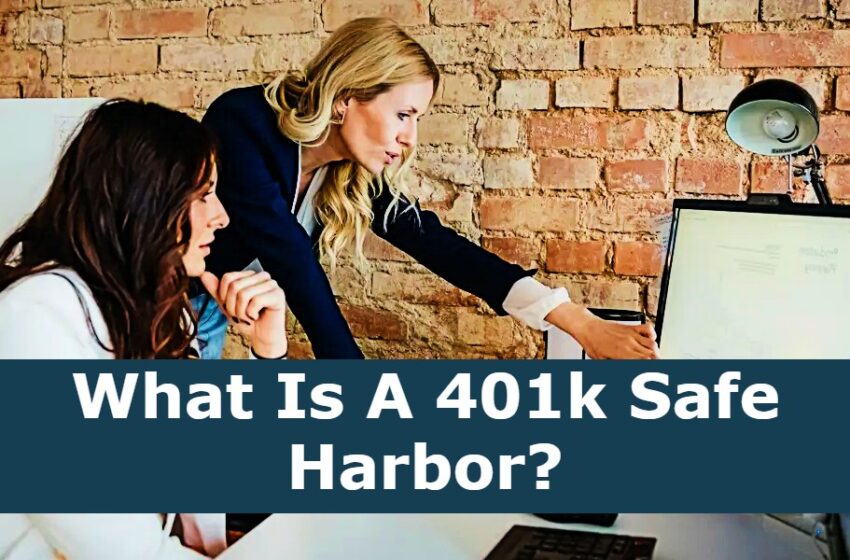
What Is A 401k Safe Harbor?
If you are in charge of a 401k or other retirement plan for your business, you’re probably wondering what the Safe Harbor rules are. This is a complex issue, and you should be aware of it before you implement any changes. Here are some common questions you’ll want to ask to ensure you’re fully informed.
Investments are less liquid than the capital market
The capital market is a hub of activity for companies and individuals looking to raise or borrow financial capital. It is often used to fund a wide range of things from start-up costs to expanding a business.
The money market, on the other hand, is a relatively short-term lending system for parties who need liquidity in a hurry. A variety of instruments such as deposits, acceptances, and collateral loans are traded in this market. While it is not the best place to invest your savings, it does provide a nice place to park your cash.
The money market is a bit more complicated than the capital market. The primary market is where issuers of securities like stocks and bonds sell their offerings to institutions like banks and other investors. The secondary market is where traders swap these same securities with other traders. Typically, governments and companies issue short-term debt to cover operating expenses.
Generally, the largest gains are found in the capital market. Its most obvious function is to facilitate financing for businesses and individuals. This is achieved by bringing together borrowers and lenders to match ideas with the right funding source. The secondary market is also where you will find the largest losses. Those who have invested in the money market have a more limited range of choices.
Withdrawal criteria
401k plan safe harbor distributions are permitted to satisfy a financial need, but they must meet specific criteria. The IRS defines a safe harbor distribution as “an immediate and heavy need.”
There are six safe harbor reasons for a hardship withdrawal. These include the purchase of a principal residence, medical expenses not covered by insurance, tuition fees, house repair, payments to prevent foreclosure, and funeral expenses.
Distributions outside the safe harbor may cause your plan to be disqualified. It is also possible that you will have to pay a penalty, which can be as much as 10% of the amount withdrawn.
The IRS recently updated the Internal Revenue Manual. The new guidance highlights what an auditor is looking for, and how plan administrators can best accommodate them. While it is not formal guidance, it should help simplify the burden of audits.
Plan sponsors need to be aware of the new rules and ensure that their plans meet the requirements. If your plan does not meet these criteria, you must update the document or take action through the Employee Plans Compliance Resolution System.
A 401k plan safe harbor distribution may be eligible for matching or nonelective contributions. You must be able to substantiate the reason for the distribution.
Nondiscrimination tests affect highly-compensated employees
If you have a company that has a 401k safe harbor plan, you may want to consider your options for nondiscrimination tests. Failure to follow these tests can have a number of consequences. For example, you could be required to make additional employer contributions to your plan’s highly compensated employees. This could have serious ramifications.
The IRS defines a highly compensated employee as one who has more than 5% of the ownership or control of a business. Additionally, he or she must earn at least $130,000 in the year 2020.
Nondiscrimination tests aim to see if highly compensated employees defer more income through a 401k plan than other employees. These tests are done to ensure that the 401k plan is not a favor to the top executives.
You should always ask your benefits department to help you decide whether you should be subject to a nondiscrimination test. While this can be a costly process, it can also save you a lot of time.
You should also be aware of the fact that many companies have a difficult time with nondiscrimination testing. In fact, the Plan Sponsor Council of America surveyed 401k plans and found that over 40% of them had to refund HCEs’ contributions in order to pass the nondiscrimination test.


